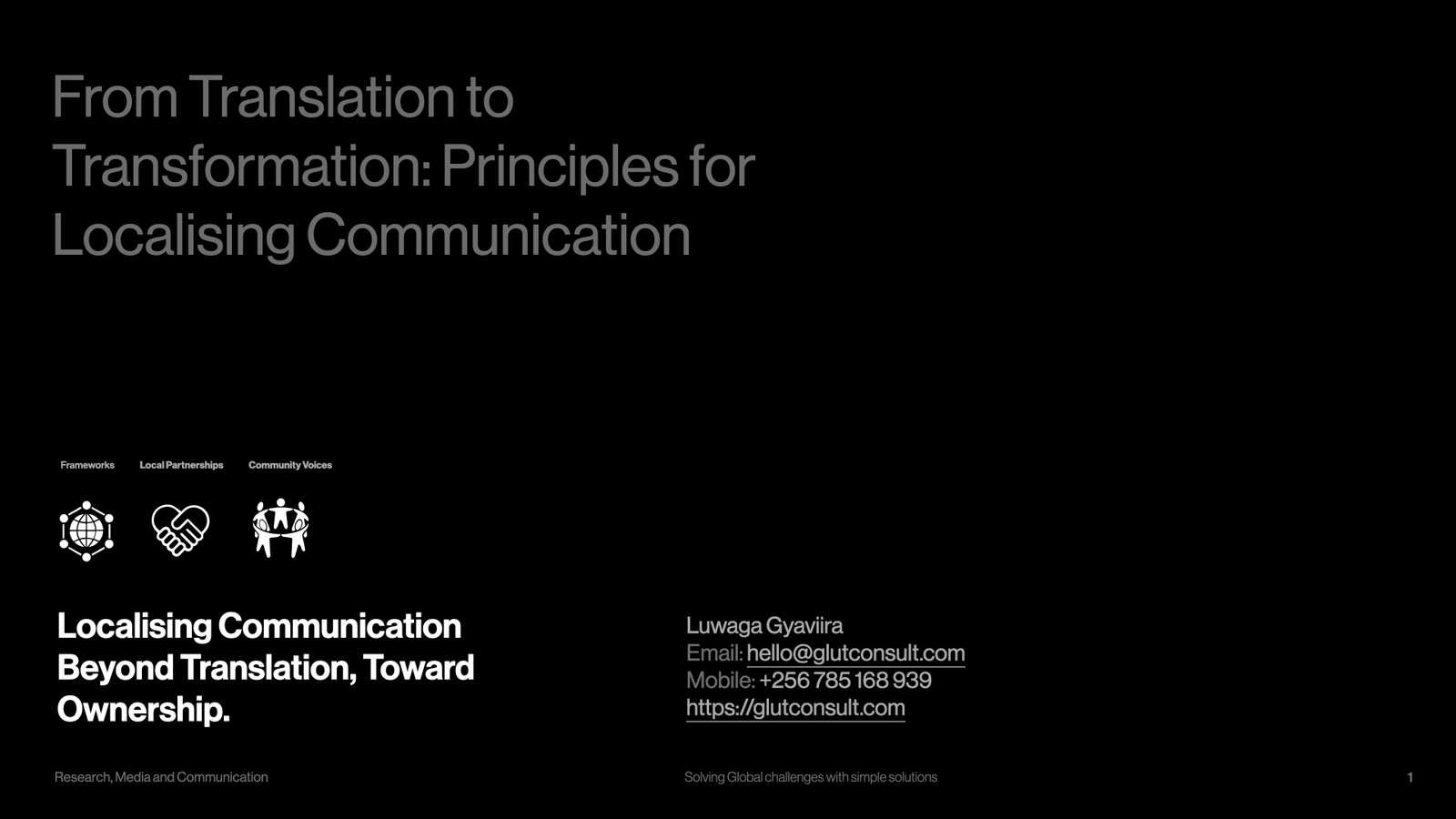By Gyaviira Luwaga, Author of “Communicating for Change: Strategic Communication for Social & Development Impact”
In humanitarian and development work, communication is often described as a bridge between action and understanding. But what happens when the bridge is built from one side only?
For too long, communication strategies have been drafted in global capitals — well-intentioned, but often disconnected from the voices they aim to represent. The movement toward localisation in communication is changing that narrative. It’s redefining who creates messages, who owns them, and how they drive impact.
This transformation is at the heart of Chapter 14 of my book, “Communicating for Change: Strategic Communication for Social & Development Impact,” titled “Localising Communication Strategies — From Global Commitments to Local Realities.”
Localising communication isn’t just about translating words into local languages. It’s about shifting power, trust, and authorship — ensuring that communication is not done to communities, but with them and for them.
The idea is grounded in global frameworks such as the Grand Bargain and the Global Refugee Forum (GRF). Both call for stronger local leadership and decision-making in humanitarian action. But while these frameworks set the policy direction, the real work happens on the ground — where communication must adapt to context, culture, and capacity.
In this presentation, i delve into how practitioners can transit from Global Frameworks to Local Realities. The real challenge lies in turning these principles into action. Based on global good practice, six operational steps help communication teams embed localisation throughout the project cycle:
- Map the Local Context: Identify local influencers, media ecosystems, and power dynamics. In Ethiopia’s Gambella region, participatory mapping revealed that women’s faith networks were key communication drivers.
- Co-Design the Strategy: Create joint design committees that include community voices from day one. In Jordan’s Zaatari Camp, this led to more relatable hygiene campaigns.
- Fund Flexibly: Support local partners with adaptable budgets. In South Sudan, block grants empowered local radio stations to respond quickly to crises.
- Support Local Creators: Build storytelling capacity. In Peru, refugee media teams created engaging campaigns across radio, theatre, and digital platforms.
- Monitor Together: Let communities evaluate communication success. In Cox’s Bazar, refugee-led “communication scorecards” helped refine health messages.
- Institutionalise Localisation: Integrate localisation benchmarks into donor policies and reporting frameworks, as seen in Sweden’s localisation-driven funding model.
These steps ensure that communication doesn’t just reach communities — it grows from within them.
Why Localising Communication Matters
Localising communication is not just good practice — it’s essential for impact.
When communication is authored by those closest to the issue, it becomes more trusted, relevant, and sustainable. It also reinforces dignity and agency, two principles at the heart of both humanitarian and development communication.
As global frameworks like the Grand Bargain and GRF evolve, localising communication ensures that commitments translate into community realities — where every message is grounded in lived experience, and every voice carries weight.
About the Author:
Gyaviira Luwaga is the author of “Communicating for Change: Strategic Communication for Social & Development Impact”— a book that explores how communication strategy, localisation, and community leadership can drive social transformation.
View the Presentation Slides here:

Leave a Reply